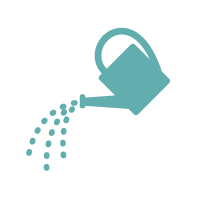Overview
The Minnesota Department of Health is changing the narrative around health to focus on opportunities and what is needed to be healthy. Through extensive community engagement and partnerships, various publications, and the creation of the Center for Health Equity, the Department explicitly addresses the social determinants of health, acknowledges structural racism, and advances health equity across all sectors and policies.
Who Took This On
Minnesota Department of Health, Executive Office
Ways You Can Get Started
- Ensure that committees/boards advising the health department include community organizers and organizational/agency representatives outside the health care sector
- Expand department framing of what creates health from a disease/outcome focus to include “what’s needed to be healthy”
See Advice for Local Health Departments below for more ways to take action.
What Sparked This?
Legislature establishes Eliminating Health Disparities Initiative
Minnesota ranks as one of the healthiest states in the nation. However, disaggregated data reveals that the state has some of the widest health and social inequities between Whites and people of color and American Indians in the United States. In 2001, the Minnesota legislature established the Eliminating Health Disparities Initiative (EHDI) to address health disparities and “improve the health status of Minnesota’s populations of color and American Indians.” The EHDI legislation identified 10 health priorities, including a goal to decrease racial health disparities in infant mortality and adult and child immunization rates by 2010.
Since 2002, EHDI has been advised by a culturally diverse advisory board and allocated a total of $9.5 million in competitive grants per biennium to local programs and projects statewide. Each year, roughly 50 organizations working in communities of color and American Indian tribes receive EHDI grant funding to develop and implement best practice strategies for the 10 priority health areas.
Increasing awareness about the social determinants of health
Although EHDI grantees made headway by targeting prevention, screening, treatment, and lifestyle education on the identified health priorities and populations, Minnesota Department of Health (MDH) staff became more and more aware that these important efforts were not enough. Nationally and in Minnesota, there was a growing understanding of the need to focus on the social determinants of health, structural racism, and the difference between health disparities and health inequities. Public health organizations including MDH and community, labor, and faith-based groups used the launch of Unnatural Causes: Is Inequality Making Us Sick? to facilitate conversations about the connection between health determinants, structural and racial inequities, and health outcomes.
These conversations increased public awareness and began to build public will for upstream prevention focused on healthy public policy. Community organizing groups began inviting elected officials, candidates, and state agency representatives to engage in conversations about health and racial equity, further expanding the conversation around health.
New leadership brings commitment to health equity and community organizing
In 2011, the Governor of Minnesota appointed a new Commissioner of Health who brought a strong commitment to health equity and social justice. The new Commissioner appointed a new Assistant Commissioner to oversee the Department’s Health Improvement Bureau and serve as Chief Health Equity Strategist. A public health nurse by training, the Assistant Commissioner also brought extensive experience in community organizing around the social determinants of health and their relationship to race, place, and class, as well as relationships with community organizers across the Midwest.
Program Description
Healthy Minnesota Partnership brings different constituencies to the table
With the change in leadership, MDH expanded its Healthy Minnesota Partnership to broaden the sectors and partners working with MDH “to improve the health and quality of life for individuals, families and communities in Minnesota.” Funded in part through a Preventive Block Grant and Cooperative Agreement, the Partnership was charged with “developing a statewide health improvement plan around strategic initiatives that ensures the opportunity for healthy living for all Minnesotans, and that engages multiple sectors and communities across the state to implement the plan.”
Who is involved in the Healthy Minnesota Partnership?
MDH coordinates the Partnership, which includes 25+ organizations representing various constituencies including public health; state departments of housing, transportation, corrections, human services, and health; universities; hospitals and insurance companies; and community and advocacy organizations.
Shifting from measuring sickness to what’s needed to be healthy
The Partnership recognized that MDH needed to change how they measured and described population health in the state. Rather than just measuring sickness and disease-related outcomes, MDH should also highlight what’s needed for well-being. Specifically, the Partnership agreed that Minnesotans needed the following to be healthy:
- A healthy start in life
- Supportive families, friends, and communities
- Safe and welcoming places to live, learn, work, play, and worship
- Knowledge, with the freedom, capacity, and desire to act on that knowledge
- Fair employment and a living wage
- Access to systems designed to meet their needs (health care, public health, social safety net, transportation, and more)
At the same time, community organizers emphasized the importance of including a community’s capacity to act and change the living conditions that impact their health. Pointing to numerous local and state examples of policy change occurring as a result of community organizing and capacity building, the Partnership included “capacity to act” as a core component of what was needed for well-being.
Health Assessment explicitly talks about racism, starts reorienting toward equity
Building on this understanding, the Partnership drafted the 2012 Minnesota Statewide Health Assessment, which included an overview of population characteristics, social and economic factors, and health outcomes for the people of Minnesota. The report explicitly states, “Many Minnesotans, especially populations of color and American Indians, experience inequitable living conditions and unequal treatment in many aspects of life. Historical, institutional and personal racism have contributed greatly to these inequities, which in turn lead to poorer health status.”
Over 100 responses were collected via an online survey and comment letters, and suggestions were incorporated wherever possible into the final draft. As the first MDH report organized around an expanded understanding of health inequities and the social determinants of health, the Statewide Health Assessment was an important tool to advance the new narrative and reorient state/local health departments and community partners toward advancing health equity.
Health Improvement Framework lays groundwork for collective action
In 2012, MDH created the Healthy Minnesota 2020 Statewide Health Improvement Framework to lay the groundwork for collective action and to shift resources to advance health equity. The framework identified 3 health priorities and indicators to track progress toward each.
The indicators include traditional indicators such as prenatal care and breastfeeding, as well as social determinants of health indicators related to education, income, home ownership, and incarceration. All of the indicators are paired with data illustrating existing inequities, an explicit statement of why the indicator is an important measure of well-being, and evidence-informed strategies to achieve the priorities.
To implement framework strategies, the Partnership created subgroups to develop strategies to: 1) develop and use narratives that emphasize health-generating factors and the opportunity to be healthy; 2) advocate for Health in All Policies; and 3) reduce duplication of effort and promote collaboration and synergy among state planning efforts.
Importantly, as the statewide framework for how to improve health, the document provides guidance to 1,400 MDH staff located in the Twin Cities and 7 offices across Minnesota, local health departments, health care institutions, and partners.
Legislators direct MDH to write equity report
The Healthy Minnesota Partnership’s work contributed to a growing awareness of the limitations of traditional approaches to eliminating persistent health disparities in the state. The Department and legislators heard concerns that Department policies and processes created barriers for organizations serving populations of color and American Indians. Spurred by these concerns, MDH leadership worked with legislators to craft language to direct the Department to write a report on advancing health equity.
In 2013, the Minnesota Legislature formally directed MDH to write a report assessing Minnesota’s health inequities and recommend best practices, policies, processes, data strategies, and other steps to promote health equity for all Minnesotans. The legislative language was informed by the expanded understanding of health promoted by the Healthy Minnesota Partnership.
MDH used this request to engage hundreds of groups across the state in conversations about what is needed to advance health equity in Minnesota. Drawing on community organizing practices, MDH asked their 100+ staff to engage their respective networks, organizations, and communities to develop the report.
These conversations and comments from an online survey became the building blocks for the Advancing Health Equity report and recommendations. MDH distributed the draft report widely to stakeholders across the state for additional input and submitted a final draft of Advancing Health Equity in Minnesota to the state legislature in January 2014.
Explicit discussion of race and structural racism
The Advancing Health Equity report explicitly leads with a discussion about the relationship of race to the structural inequities that contribute to health disparities. The report emphasizes that “Structural racism is perpetuated when decisions are made without accounting for how they might benefit one population more than another, or when cultural knowledge, history and locally-generated approaches are excluded. When this happens, programs and policies can reinforce or compound existing race-based inequities.”
To advance the new approach to addressing health inequities in Minnesota, the report recommends:
1) Advance health equity through a Health in All Policies approach across all sectors.
2) Continue investments in efforts that currently are working to advance health equity.
3) Provide statewide leadership for advancing health equity.
4) Strengthen community relationships and partnerships to advance health equity.
5) Redesign the Minnesota Department of Health grant-making process to advance health equity.
6) Make health equity an emphasis throughout the Minnesota Department of Health.
7) Strengthen the collection, analysis, and use of data to advance health equity.
Center for Health Equity created
In 2013, the Commissioner of Health established the Center for Health Equity (CHE) to implement the report recommendations and to prioritize advancing health equity within the Department. CHE is a hub for organizing and promoting work both inside and outside MDH to reduce health inequities.
CHE includes the Office of Minority and Multicultural Health and the Eliminating Health Disparities Initiative, and collaborates with the Minnesota Center for Health Statistics. Through these components, CHE:
- Mobilizes data and research about health inequities to inform policy
- Distributes funding for culturally appropriate programs to communities most impacted by health inequities
- Leads initiatives to target health inequities
- Provides technical assistance and training for MDH staff to support action to address health inequities
Developing the Triple Aim for Health Equity
MDH describes the approach that informs and guides their work as the “Triple Aim for Health Equity”:
- Expand the understanding of what creates health
- Implement a Health in All Policies approach, with health equity as the goal
- Strengthen the capacity of communities to create their own healthy future
These practices are based on a theory of change that recognizes the need to build collective capacity to advance health equity.
“Power can be built through organizing narrative, resources, and people. These 3 arenas are completely interconnected.”
The Triple Aim of Health Equity guides action within all sections and programs of the Department. Staff have made changes in grant making, contracting, hiring, laboratory procedures, community engagement, and advisory committee processes in accordance with the Triple Aim. It’s used extensively in reports and initiatives to describe MDH’s multi-pronged approach to mobilize people, narrative, and resources to advance health equity.
Outcomes and Impacts
-
Health arguments and data used in policy change
The Department has written data-focused white papers that public health and community advocates have used to advocate for equitable policy change. For example, over the past 5 years:
- Members of the state legislature and community advocates used the Advancing Health Equity report and White Paper on Income and Health to inform the legislative debate and successfully increase the state minimum wage in 2014. Community advocates also used the reports in debates to increase the minimum wage to $15 per hour in Minneapolis.
- Centro de Trabajadores Unidos en Lucha used the White Paper on Income and Health to successfully adopt new labor contracting policies (e.g., right to unionize and increase the minimum wage) with big box stores.
- Advocates, local public health practitioners, and policy makers used the White Paper on Paid Leave and Health to successfully advocate for paid leave ordinances in Minneapolis and St. Paul, and advocate for increases in paid parental leave for State workers. Workers at the Minneapolis-St. Paul Airport also referenced the report in a successful fight for paid sick days.
- Data about the relationship between unemployment and health was included in the successful passage of a Ban the Box state law, which prohibits potential employers from asking about arrest history on initial application forms.
-
Health Commissioner leverages leadership position for national call to equity
During his time as the president of the Association of State and Territorial Health Officers (ASTHO), the Health Commissioner leveraged the annual “President’s Challenge” to increase national attention to health equity. This resulted in increased attention to health equity at ASTHO, development of resources to advance health equity, broadened understanding of the Triple Aim for Health Equity, and 10 states pledging to advance health equity over the following year.
-
State framework guides local health departments
Numerous local health departments and nonprofit health care organizations across Minnesota used the Statewide Health Assessment and the Healthy Minnesota 2020 Framework to inform and guide their local community health assessments, and community health improvement and community benefit plans. The Assistant Commissioner notes that the state framework articulated the value of doing upstream policy work and supported jurisdictions to engage in local and state policy discussions.
-
Cross-sector engagement changes outcomes
The diversity of perspectives in the Healthy Minnesota Partnership was critical to expanding the understanding of health and of how policies across many sectors affect health. This helped change how health is framed, which indicators are used to measure health and well-being, and who is included in and engaged by the decision-making process. It introduced a Health in All Policies approach and strengthened alignment between many State agencies, as well as with community organizations engaged with these sectors.
-
MDH work supports creation of Foundational Practices for Health Equity
As part of her work as Chief Health Equity Strategist, the Assistant Commissioner and members of the MDH Health Equity Team facilitated a process to develop Foundational Practices for Health Equity: A Learning and Action Tool for State Health Departments. It outlines 7 foundational practices for health departments to advance health equity and describes critical capabilities for departments to assess and build their internal and external capacity. Developed through a partnership between the Health Resources and Services Administration (HRSA) and the Region V Collaborative Improvement and Innovation Network (COIIN) on Infant Mortality, it is designed to help health departments operationalize social determinants and health equity work in their agencies.
-
Statewide Health Improvement Partnership incorporated health equity lens
The Statewide Health Improvement Partnership (SHIP) is a $38 million statewide grant program to support local health departments and community leadership teams to create policy, system, and environmental change to decrease obesity, increase physical activity, and lower tobacco use and secondhand smoke exposure. In 2015, SHIP grantees began incorporating a health equity lens into their work to address the significant disparities in these risk factors among people of color and American Indians, and low-income people. Grantees are expanding their leadership teams and using data to identify opportunities to address inequities. Specific examples include passing smoke-free building policies in public housing buildings, targeted efforts to decrease access to menthol and flavored tobacco products in African American communities, focusing on sugar-sweetened beverages policies in Latinx communities, and making grant making to American Indian tribes more culturally sensitive.
-
Health Equity Data Analysis strengthens local public health capacity to advance equity
Health Equity Data Analysis (HEDA) involves identifying differences in health outcomes by population groups, and then considering not only individual factors but also the higher-level factors (e.g., policies and systems) that create those differences. MDH worked with 10 local public health departments to pilot HEDA in 2016, and all local health departments in Minnesota are now being introduced to it.
-
State Community Health Services Advisory Committee develops Advancing Health Equity Workgroup
The State Community Health Services Advisory Committee advises the Health Commissioner and provides guidance on the development, maintenance, financing, and evaluation of community health services in Minnesota. The Advisory Committee, recognizing that health equity is an urgent and compelling public health concern, charged their Advancing Health Equity Workgroup “to provide local elected officials and local public health leaders with the language, understanding, and practical help to advance health equity throughout Minnesota’s public health system.” After meeting for nearly a year, the Workgroup’s final report included:
- A set of 6 practices for local health departments to advance health equity and an online resource library to help implement the practices in local communities
- A set of recommendations to advance health equity directed to MDH, local elected officials, local health departments, and the State Community Health Services Advisory Committee
Future Steps
The Department will focus on strengthening their own and partners’ collective capacity to advance health equity through the set of practices summarized in the Triple Aim of Health Equity and implementing the recommendations in the Advancing Health Equity in Minnesota report.
In May 2017, the Center for Health Equity hired a new Director who brings experience managing cross-sector work to advance racial equity and organizing limited-English communities. The new Director plans to further expand and build CHE’s capacity to support Department and community efforts to engage communities experiencing health inequities. This includes training for staff and local health department and community partners on narrative, data analysis, community engagement, and racial equity.
MDH will work to make health equity an emphasis through planning processes, grant making, budget and policy proposals, and program strategic plan and planned work activities. This includes the annual MDH strategic plan, community engagement plan, program-specific plans, and updates to the Statewide Health Assessment and State Health Improvement Framework.
MDH is also committed to supporting leadership development at every level of the organization and with partners. This includes bringing more people into decision making, and leadership holding itself accountable to outcomes.
Advice for Local Health Departments
-
Lead with opportunities, not with diseases
Expanding the understanding of health equity includes building organizational skill and capacity to recognize dominant narratives and work with others to develop new narratives and framing around what creates health. This practice and skill set has been critical for changing the understanding of how others are needed to improve the conditions that impact health and well-being.
-
Organize people, narrative, and resources
A key aspect of MDH’s work to advance health equity has been incorporating community organizing principles and practices into their work. To achieve the Triple Aim of Health Equity and advance health equity, departments should:
- Organize people: Develop accountable relationships and partnerships that align interests and directly impact decision makers.
- Organize narrative: Build public understanding and public will to support action that reflects health equity.
- Organize resources: Shift the way resources, processes, and systems are structured to advance health equity.
-
Recognize that advancing health equity requires a “systems changing” approach
Commitment to a set of practices can help change a pattern in a system or organization. This requires strategies that disseminate and amplify practices. Recognize the change process is organic — it must be interwoven with all other work. Commit to reflection as an iterative process to look for the patterns of change. Then work to strengthen the patterns that are helping achieve the aim of health equity, and change those patterns that are not. Accept that work is sometimes imperfect and incomplete, and give yourself and others permission to make course corrections in order to navigate toward health equity.













